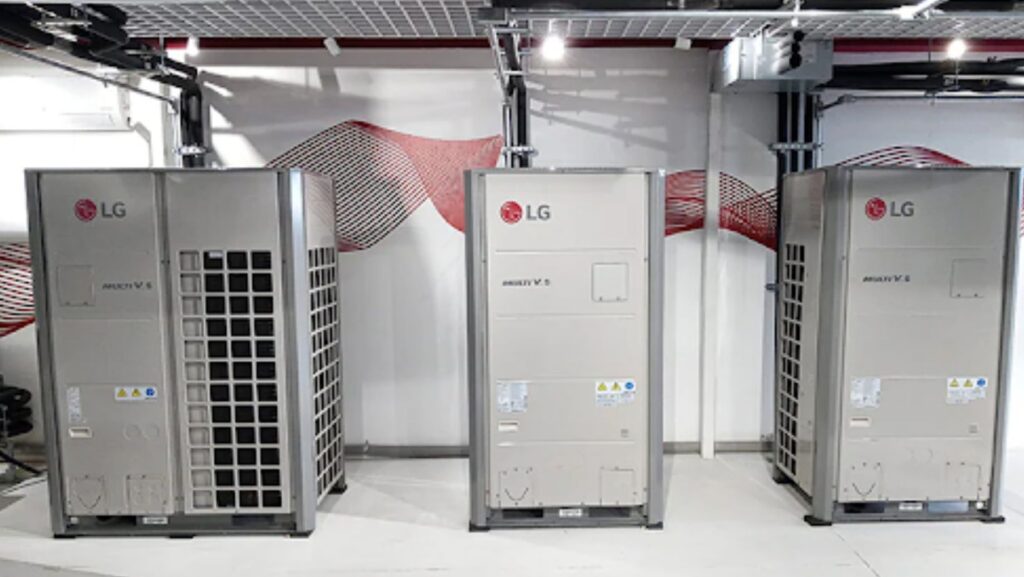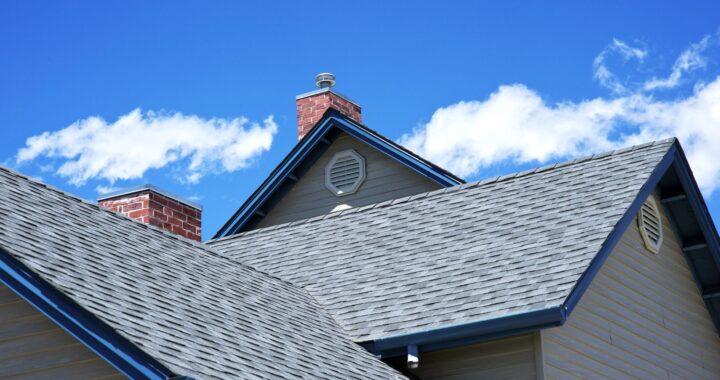Unveil Greatest High-Efficiency AC Units 2023

Air conditioning systems are pivotal in providing comfort in homes and workplaces, especially during hot weather conditions. As concerns over energy consumption and environmental impact grow, the demand for high-efficiency air conditioning (AC) systems has risen significantly. High-efficiency AC units are designed to consume less energy while delivering the same or even better cooling performance compared to their standard-efficiency counterparts.
The efficiency of AC systems is measured by how well they can convert electricity into cooling power, with a higher efficiency meaning that less electricity is wasted during the process. This is not only beneficial for the environment by reducing the greenhouse gas emissions associated with electricity production but also for consumers by lowering their energy bills.
High-efficiency air conditioning units employ advanced technologies, including variable-speed compressors, improved coil design, and smart thermostatic controls. These features help in regulating temperature more accurately and providing consistent comfort while using less energy. Moreover, they often come with better quality components that contribute to longevity and fewer maintenance needs.
As the focus on sustainability intensifies, the development and installation of high-efficiency AC systems have become a priority in the HVAC industry. Manufacturers are continuously innovating and pushing the boundaries of what’s possible in terms of energy efficiency. The result is a market that offers an array of high-performance models that not only reflect responsible energy use but also present a financially sound investment for the future.
Exploring the Features of the Most Efficient AC Units in 2023
As of 2023, the most efficient air conditioning units are designed with cutting-edge technology that pushes the boundaries of energy conservation and performance. These units come equipped with several key features aimed to maximize efficiency while minimizing energy costs. One of the standout attributes is the inclusion of variable-speed blower motors, which allow for precise control over airflow, thereby ensuring that cooling is distributed more evenly and power consumption is kept to a minimum.
In addition, high-efficiency AC units often employ advanced compressor technology, such as staged or modulating compressors, which can adjust their operation to match the cooling demand. This means they don’t operate at full capacity all the time, leading to significant reductions in energy usage compared to older, single-stage units.
Smart thermostats are another integral feature of these modern systems. When paired with a high-efficiency AC, smart thermostats optimize the cooling schedule based on real-time data and user preferences, further enhancing the unit’s efficiency. Furthermore, many of these high-end AC units are designed to integrate seamlessly with home automation systems, allowing for remote control and monitoring of the air conditioning, giving homeowners the power to make adjustments on-the-go.
The use of eco-friendly refrigerants that have a lower global warming potential (GWP) is also a hallmark of the most efficient AC units in 2023. By reducing the environmental impact without compromising on performance, these units reflect the industry’s shift towards sustainability. Collectively, the combination of these innovative features sets the highest efficiency AC units of 2023 apart, making them the epitome of modern cooling technology.
The Role of SEER Ratings in Identifying High-Efficiency AC Systems
When in the market for an air conditioner that promises outstanding efficiency, the SEER rating, which stands for Seasonal Energy Efficiency Ratio, is an invaluable guide. This rating is a metric used to gauge the cooling output of an air conditioner over a typical cooling season, divided by the total electric energy input during the same period. In other words, it is a measure of how much cooling an AC unit delivers per watt of electricity.
The higher the SEER rating, the more efficient the air conditioning unit is, and consequently, the lower the operating costs will tend to be in the long run. As of 2023, the U.S. Department of Energy mandates a minimum SEER rating of 14 for newly manufactured air conditioners in many parts of the country, ensuring a baseline level of efficiency.
However, the most efficient AC units exceed this standard and can boast SEER ratings of 20 or above. These high-efficiency air conditioners frequently incorporate features like variable-speed compressors and advanced fan motors, which precisely adjust the cooling output to the current conditions. This not only conserves energy but also enhances comfort by maintaining more consistent temperature levels and humidity control.
Homeowners and businesses looking to maximize energy savings and minimize their environmental footprint should carefully consider the SEER rating while selecting an air conditioning system. It is a direct indicator of the unit’s efficiency and a critical element in projecting both the financial and environmental cost of keeping cool during the warmer months.
Greatest High-Efficiency AC Models for Residential and Commercial Use
In the quest for the highest efficiency air conditioners, several models stand out for their exceptional performance in both residential and commercial settings. For homeowners, units like the Daikin DX20VC, with a SEER (Seasonal Energy Efficiency Ratio) rating of up to 23, are at the pinnacle of energy efficiency. The Carrier Infinity 26 Air Conditioner, featuring a SEER rating of up to 26, also ranks highly, thanks to its variable-speed compressor that adjusts cooling output with precision.
Commercial users have different requirements, seeking units that can handle larger spaces effectively while still conserving energy. The Trane Voyager Commercial Line offers a collection of rooftop units that can achieve SEER ratings as high as 21, ensuring substantial energy savings for businesses. The Lennox Energence lineup is another prominent collection to consider, boasting ultra-high-efficiency models that equally prioritize performance and energy conservation.
Energy efficiency in AC units goes beyond just the immediate cost savings on utility bills. With the increasing emphasis on sustainable practices, high-efficiency AC units often come with advanced features like smart thermostat compatibility, environmentally friendly refrigerants, and programmable settings which further augment their appeal. Additionally, many of these top-tier models are designed with noise reduction technologies, making them not only energy-conscious choices but also enhancing the comfort of living and working environments.
Investing in one of these high-efficiency models can be more costly upfront, but they generally offer significant long-term savings in utility costs and reduce the environmental footprint. Their advanced features, durability, and the manufacturers’ focus on innovation make them ideal choices for consumers looking to balance comfort with sustainability.
How to Maximize Your Energy Savings with a High-Efficiency AC
7. Maximizing energy savings with a high-efficiency AC goes beyond just purchasing the unit with the highest SEER rating. It involves a holistic approach to optimizing the performance of your air conditioning system. Here are some key ways to ensure you’re getting the most out of your high-efficiency investment:
1. Proper Installation: Incorrect installation can significantly reduce the efficiency of an AC unit. Ensure that a qualified technician installs your AC in accordance with the manufacturer’s specifications. The technician should also check for any duct leakage, which can lead to energy loss.
2. Regular Maintenance: Routine maintenance is critical. This includes cleaning or replacing filters every 1-3 months, checking refrigerant levels, and cleaning the evaporator and condenser coils. These steps help your AC run at peak performance and prevent energy waste.
3. Smart Thermostats: Pairing your high-efficiency AC with a smart thermostat can lead to further energy savings. Smart thermostats can learn your schedule and preferences, adjusting the temperature automatically and thereby reducing cooling costs.
4. Insulation and Sealing: Ensure that your home is well-insulated and sealed against air leaks. This will minimize the loss of cool air, reducing the workload on your high-efficiency AC.
5. Strategic Use: Avoid overcooling. Set your thermostat to the highest temperature you are comfortable with, and use ceiling fans to circulate cool air more effectively.
By following these strategies, you’ll not only reduce your carbon footprint but also see a significant decrease in your energy bills, making your high-efficiency AC a wise and eco-friendly investment for the long term.
Conclusion: Investing in a High-Efficiency AC for Long-Term Benefits
Investing in a high-efficiency air conditioning system is not simply a short-term solution to beat the heat – it’s a strategic choice that pays dividends in comfort, savings, and environmental impact over the long term. Upfront, these units may come with a higher price tag compared to their less efficient counterparts, but the initial investment is recouped through significantly reduced energy bills.
The benefits of high-efficiency AC units extend beyond financial savings. They also play a critical role in reducing carbon footprints, a contribution that is increasingly important as the world grapples with climate change. More efficient systems consume less energy, which leads to lower greenhouse gas emissions from power plants. This is especially valuable in regions where electricity grids are still reliant on fossil fuels.
In the modern world, where both economic and environmental concerns are paramount, selecting a high-efficiency air conditioner is a decision that serves multiple goals. Users not only enjoy the immediate comfort of a cooler space but also contribute to broader efforts to conserve energy and promote sustainability.
Moreover, governments and utility companies often offer rebates and incentives for high-efficiency AC installations, making the transition more accessible and appealing. By capitalizing on these programs, consumers not only amplify their own benefits but also support policies that encourage energy-efficient practices across the board.
In essence, high-efficiency ACs represent a fusion of personal advantage and civic responsibility. They embody an investment that is prudent, responsible, and ultimately beneficial on both an individual and a global scale, ensuring that today’s comfort doesn’t come at the expense of tomorrow’s world.



 Digital Marketing For Roofers: How To Improve Your Local Visibility
Digital Marketing For Roofers: How To Improve Your Local Visibility  How Miami’s Weather Impacts Roof Longevity and What Homeowners Can Do About It
How Miami’s Weather Impacts Roof Longevity and What Homeowners Can Do About It  A Complete Guide to Choosing and Using Glass Drill Bits Effectively
A Complete Guide to Choosing and Using Glass Drill Bits Effectively